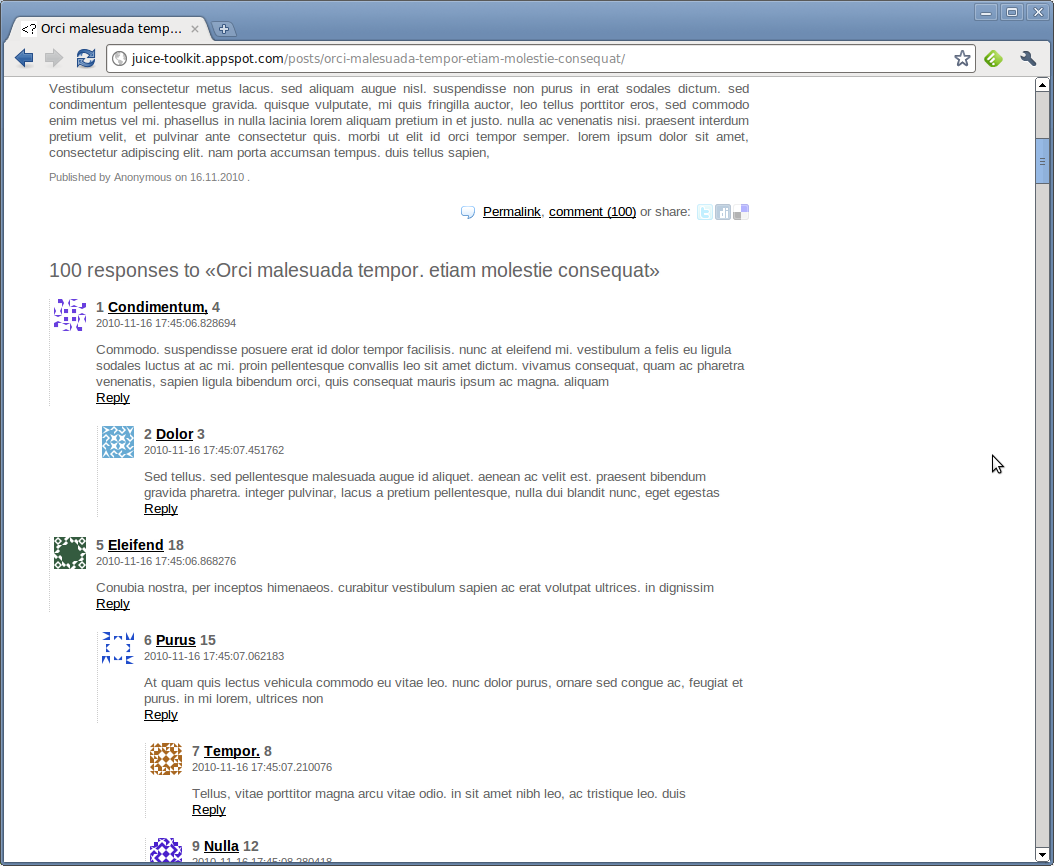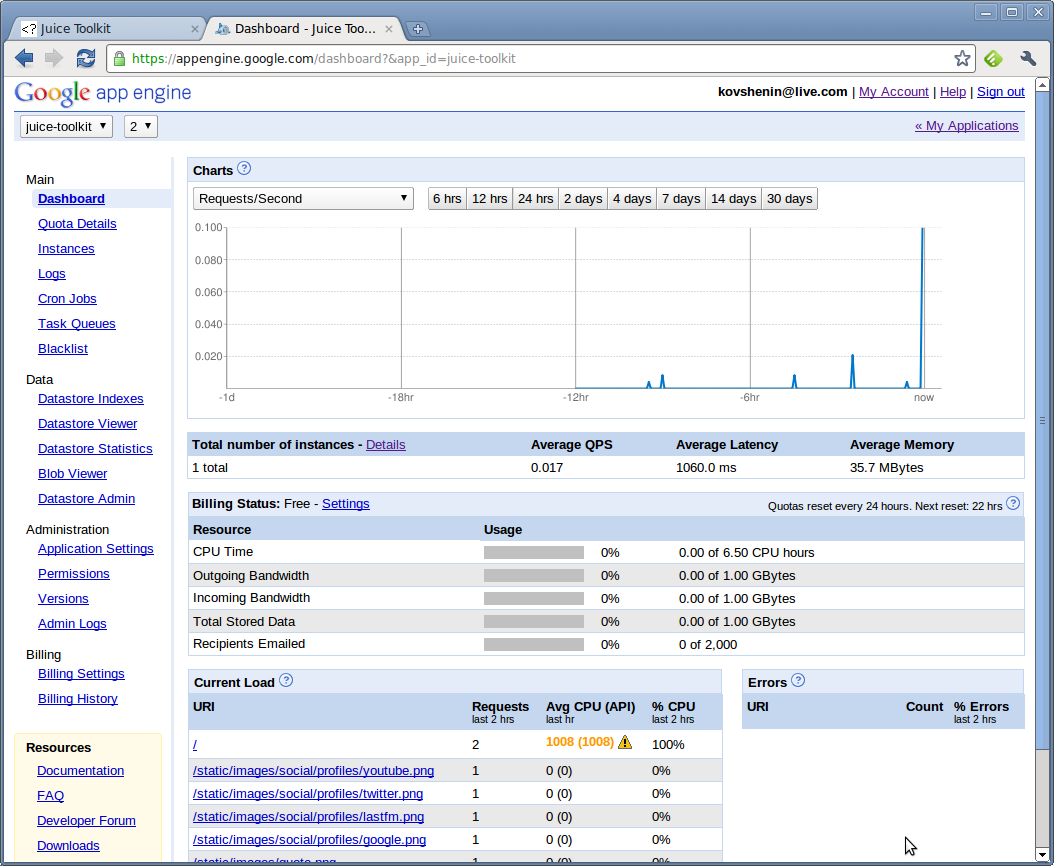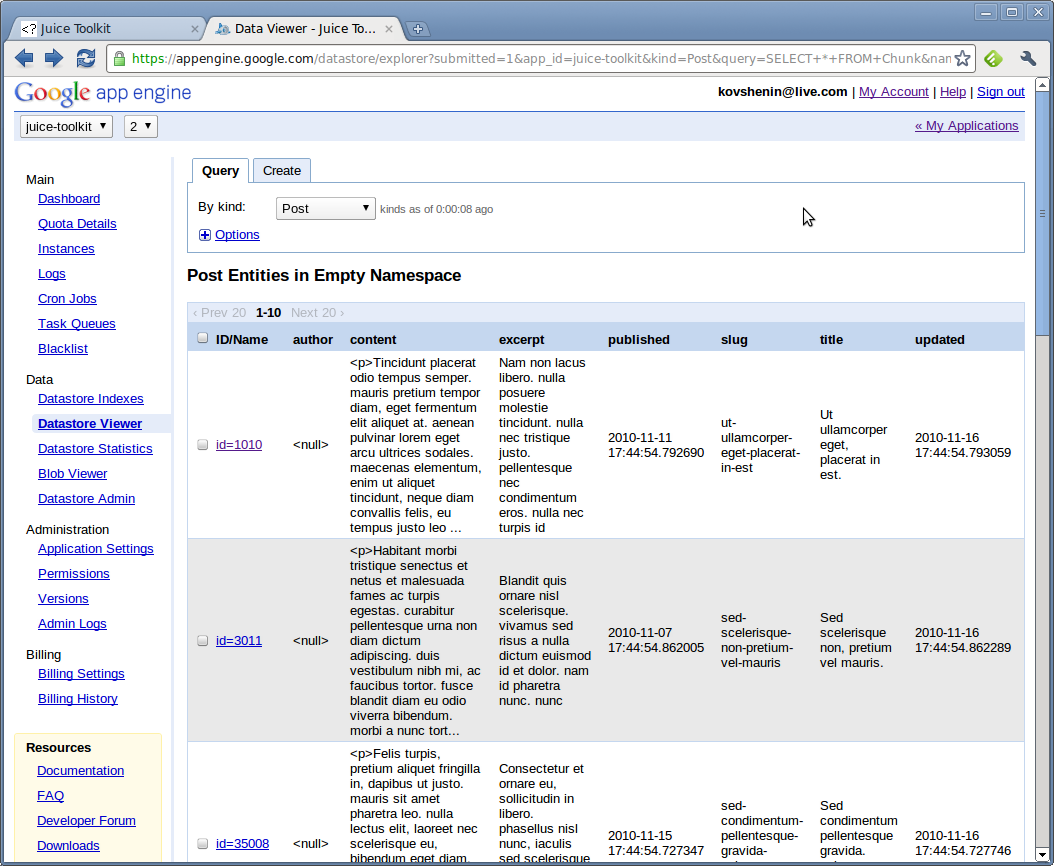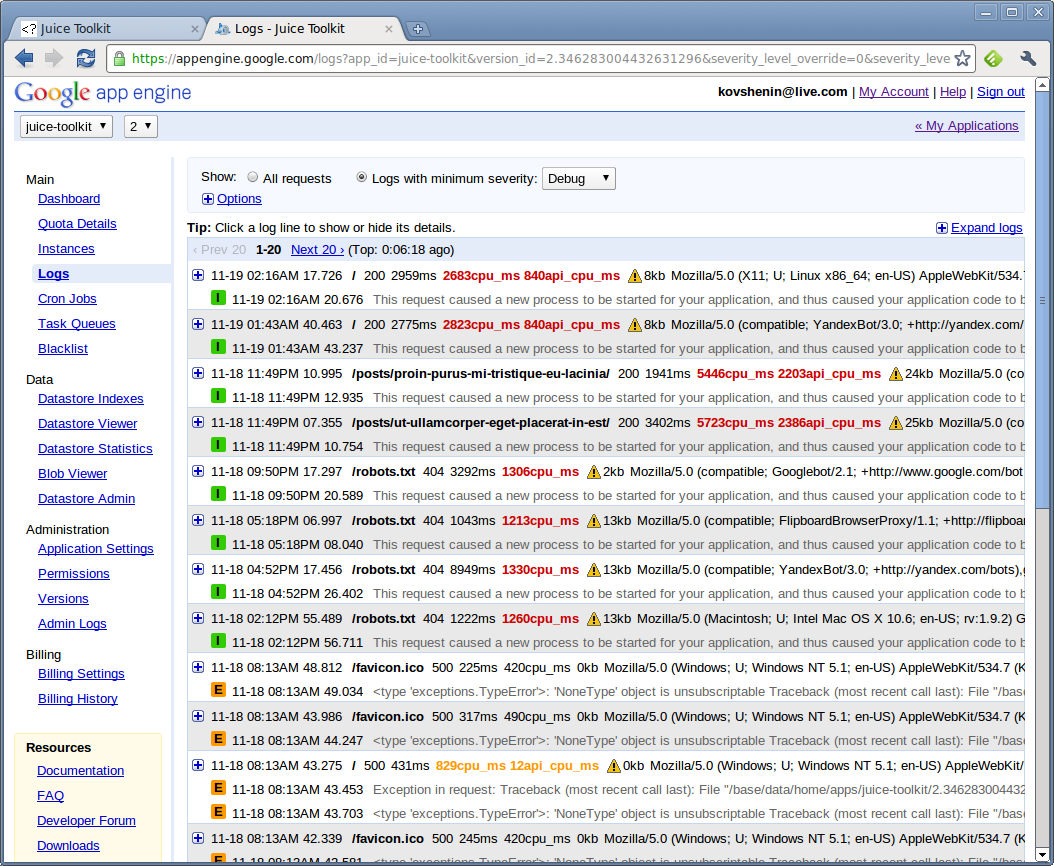If you’ve been following my tweets you might have noticed that I’ve been running around Python and Django and Google App Engine for the last few weeks. Honestly, I fell in love with Python the second I wrote my first few lines of code, but it is not what this post is about. This post is about my short experience with App Engine.
My first experience with App Engine was back in 2009, when I deployed my hello world application, made sure it worked on appspot and then forgot about it, since I was more keen on finishing my Foller.me project in PHP. I didn’t really get the idea of cloud computing and distributed applications at that time, since I had no experience in heavy load at all. When Foller.me was reviewed on Mashable, I thought that 16k people visited my website that day, but in reality the figures were different, since the whole thing just stopped working.
What do you think Google runs on? Do they run on water vapor? I mean, cloud – it’s databases, and operating systems, and memory, and microprocessors, and the Internet!
Larry Ellison, CEO & Co-founder, Oracle
I spent a little less than a year on Amazon EC2, got familiar with their tools and services – quite cool if you have a few hundred extra bucks to spend every month. Yeah, the reason I dropped out from Amazon in favor of MediaTemple was the cost. A few months later Amazon announced Cloud Computing Free of Charge for a whole year, but it was too late for me. I was already playing around with Python and Django, thinking about Google App Engine.
The Google Developer Day conference in Moscow made me reconsider App Engine with a few cool improvements, especially for businesses. So I made my final decision to branch my Juice Toolkit project into a GAE version, which I was already working on at that point.
It did take me a few days to rewrite my Django code for Google’s Datastore support and I hope that it’s worthed. I used the django-mptt package to work with trees in the master branch of Juice, which unfortunately did not work out of the box with App Engine, so yeah, I wrote my own trees in App Engine for threaded comments, pages and taxonomy. Of course it’s still not final and requires some refactoring and optimization, but that wasn’t very difficult ;) And memcache, oh I love App Engine’s memcache. Their limitations docs said I can use up to 1 megabyte of memory storage with my free account, but memcache reports that current usage is over 2 megabytes and Google ain’t charging!
I cannot say that I now know much about App Engine, since there’s still quite a lot to learn, but I do thing that beginners like me would love a list of short tips that would help them on their way from Django to Google App Engine:
- Django Models are not compatible with Google App Engine models, you have to rewrite them
- The Django admin and authentication systems are built on Django models, thus they will not work
- There is an appengine-admin project, but you’ll be better off with Google’s Datastore Viewer
- Django’s shell (interactive console) is replaced by Google’s online shell, usually located at localhost:8080/_ah/admin/interactive (it is lacking the Run Program on Ctrl+Enter feature)
- When you pass around objects linked together (for instance parent and child comments), note that obj and obj.key() are slightly different: .key() method is more likely to get a fresh copy of your object.
- If you need to run something heavy, don’t be lazy, use the Task Queue API
- Profile your code on appspot. Google says that your free account will be able to serve 5 million page views per month. I did a little calculation: 5 million / 30 days ~ 160k page views per day. Google gives 6.5 CPU hours every day, so you should be able to serve ~ 7 page views per second. This means that you have to spend less than ~ 150 CPU milliseconds to generate each page in order to serve 5 million per month. That should be your goal. Quite simple, eh? Use memcache.
I guess that’s enough for a start. If you’d like to stay tuned to what I’m up to, make sure you follow the Juice Toolkit project at Github. Note that there’s a branch called GAE, since the master branch is completely based on Django. Thank you for retweeting





[…] This post was mentioned on Twitter by Konstantin Kovshenin and Manmohanjit Singh, Amor. Amor said: A Brief Introduction to Google App Engine http://bit.ly/9u4mpR – via @kovshenin […]
With Django-nonrel you can actually use Django models on App Engine (and other NoSQL DBs). The Django admin and auth and many other apps work, too. The shell works. The runserver works. Almost everything works. Only JOINs and other SQL-only features don't work, but we're working on solutions for that, too.
http://www.allbuttonspressed.com/projects/django-…
http://www.allbuttonspressed.com/projects/djangoa…
Waldemar, that's interesting, thanks so much for the links. Although I do love Django and Django's ORM, I'd still be happy to get the experience of working directly with Google's Datastore API, but yeah, might switch over to Django models afterwards, since they're quite wikid! Thanks again.
Awesome article. Very interested to see what you'll be up to next. We hope Media Temple is treating you well, and let us know if you need anything in the future. Keep up the good work.
Thanks Matt, yeah Media Temple's treating me well, I got a good deal from Ryan and I love your overall service. Never before have I seen a hosting company that solved my tickets directly on Twitter ;) so keep up the great work!
[…] back then that performance is an issue until the day I got featured on Mashable. More about it in a previous post. Python, App Engine and Open Source. […]